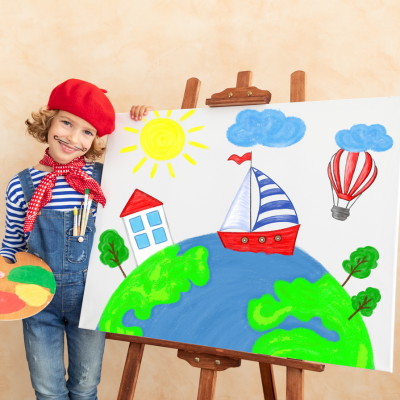Join our Online Community
Discover FREE resources to Play your way to team success
- Regular Articles
- eBooks
- Science Behind Play
- Activities
- Tools & Quizes

Insights from the NIFP Report
Unlocking the Power of
Play
In today’s fast-paced world, the importance of play often gets overlooked in corporate environments. However, a growing body of research continues to validate that play is essential not only for childhood development but also for fostering creativity, innovation, and team cohesion in adults. Recently, the National Institute for Play (NIFP) released an extensive report titled The Power of Play. This 50-page document delves into the scientific evidence supporting play’s impact on personal well-being and team dynamics.
Aiming to explore the dividends and varieties of play, this paper identifies the key questions—the why, the what, the when, the where, the who, and the how of play—that tell us what play is and help us understand why play is important.
If you don’t have time to sift through all 50 pages, don’t worry—we’ve done the hard work for you. As play advocates ourselves, we’re committed to sharing the transformative effects of play with our community. Below, we highlight the key findings from the report and explore how embracing play can drive success in both personal and professional settings.
What is
Play
Play is often perceived as a childhood activity, but its significance extends far beyond early development.
According to the NIFP report, Play is an ancient, voluntary, pleasurable episode or set of events that we (and other species) engage in for its own sake that meanwhile strengthens our muscles, instructs our social skills, tempers aggression, releases stress, deepens our positive emotions, and enables balance (Eberle 2014).
This definition underscores the variability of play, which changes from situation to situation and from one individual to another. It is this flexibility that makes play a universal yet highly personalised experience.
But why is it so important, especially for adults?
- Building Brains
Play stimulates neural pathways essential for cognitive development, laying the groundwork for innovative thinking and effective problem-solving. - Enabling Attunement and Securing Attachment
Starting at about six weeks of age, babies engage in a natural, rhythmic interaction known as prosody or “motherese.” This playful exchange between infants and caregivers is hardwired into both brains, initiated by eye contact and resulting in mutual joy and the infant’s instinctive social smile. It fosters deep emotional bonds crucial for personal relationships. - Developing Self-Awareness
Through role-playing, individuals gain a deeper understanding of their emotions and behaviours, promoting personal growth and emotional intelligence. - Learning and Loving Language
Storytelling and playful interactions enrich language skills, enhancing vocabulary and communication essential for academic and social success. - Enhancing Executive Function and Encouraging Self-Regulation
Navigating the rules of play helps individuals control impulses, focus attention, and achieve goals, crucial for personal and professional effectiveness. - Sharpening Social Skills
Play encourages cooperation, negotiation, and teamwork, fostering a sense of community and preparing individuals to thrive collaboratively. - Reducing Stress
Play provides a mental and emotional escape, promoting relaxation and resilience against daily pressures. - Training Physical Skills and Building Strength
Physical activities during play improve coordination, fitness, and confidence, encouraging individuals to tackle new challenges. - Boosting Courage and Increasing Stamina
Engaging in play builds not only physical endurance but also the courage to explore new frontiers with determination.
This concept isn’t new to us at Corporate Challenge Events. We’ve seen firsthand how play influences team success through our Play Philosophy, which promotes creativity, problem-solving, and cohesion. But the NIFP report takes it a step further, providing scientific data to back up these claims.
Playing together requires
understanding but also trains understanding as we learn teamwork and our place on the team, our role at the dinner party, or further out, our function in the operating room and our place in the workplace. Organizational behavior researcher Charalampos Mainemelis and Sarah Ronson (2006) observed that “although on the surface the reality of play seems to contradict the very idea of work, play in fact creates new work for the future” (86). Accordingly, some of the most innovative corporations in the information sector build play into work experiences. And naturally so. We learn to communicate at play, we learn to compete playfully, and at play we learn to smooth over conflict. We learn to form up and perform. Play strengthens our bonds and augments our performance.

How We Were Wired to
Play
The NIFP report makes a compelling case that humans are biologically hardwired for play. Evolutionarily, play has served as a critical mechanism for survival, fostering creativity, adaptability, and social connection.
Through play, early humans learned to develop the skills necessary for hunting, problem-solving, and community building. While the environment has evolved, our brains have retained this natural instinct for play because of the profound benefits it provides.
In fact, play activates key neural circuits, including the dopamine reward system, which releases chemicals that promote feelings of joy, satisfaction, and motivation. This biological response is deeply ingrained, starting from infancy, as babies engage in playful interactions with their caregivers through facial expressions and cooing. These early playful exchanges foster secure attachment, social bonding, and emotional intelligence, laying the groundwork for future relationships and collaboration.
But play is not just about survival; it is also essential for human flourishing. The report emphasises that play shapes the development of higher-order skills like empathy, resilience, and cognitive flexibility. In essence, the way we are wired to play reflects how essential it is to who we are and how we succeed in both personal and professional realms.
Play
Personalities
The NIFP report identifies various “play personalities” that reflect how individuals uniquely express themselves through play.
Understanding these personalities can help teams recognise and embrace different strengths within the group, fostering a more dynamic and inclusive environment. Let’s take a closer look at each play personality:

1. The Joker:
The Joker loves humour and light-heartedness. They’re the life of the party, always ready with a joke or a funny story. If this is you, consider bringing more humour into your work. It could be as simple as sharing a funny meme with your team or brainstorming creative, out-of-the-box ideas.

2. The Kinesthete:
The Kinesthete loves to move. They might be an athlete or dancer, or simply someone who thinks better while pacing. If you’re a Kinesthete, try incorporating more movement into your workday. Stand while you work, take walking meetings, or introduce team-building activities that get everyone up and moving.

3. The Explorer:
The Explorer is driven by curiosity. They love to learn, whether that’s new skills, ideas, cultures, or environments. If you’re an Explorer, seek out opportunities for learning and growth at work. Attend workshops, take on challenging projects, or propose a ‘learning lunch’ where team members share their knowledge.

4. The Competitor:
The Competitor is motivated by challenges. They thrive on competition and love to win. If you’re a Competitor, set challenging goals for yourself and celebrate when you achieve them. You might also enjoy roles that involve negotiation or strategic thinking.

5. The Director:
The Director enjoys planning and executing scenes. They’re often organised, detail-oriented, and great at delegating tasks. If you’re a Director, look for opportunities to lead projects or initiatives at work.

6. The Collector:
The Collector loves to gather information or things. They might be the person with the most books in their office or the one who knows the most industry trivia. If this applies to you; your love for collecting and organising can translate well into maintaining and updating records, creating efficient systems, and ensuring important information is easily accessible to all team members.

7. The Artist/Creator:
The Artist/Creator enjoys making things. They might be a writer, painter, musician, designer, or coder. If you’re an Artist/Creator, find ways to incorporate creativity into your work. Your ability to think outside the box can lead to fresh solutions that others might overlook.

8. The Storyteller:
The Storyteller has a rich imagination and loves narratives. They might be drawn to roles like marketing, public relations, or content creation. If you’re a Storyteller, use your skills to create compelling brand stories or to make presentations more engaging.
As you read through these play personalities, did any of them resonate with you? Perhaps you found yourself nodding along, recognising these traits in yourself. That’s your play personality peeking out!
Recognising the diversity in play personalities within teams helps enhance collaboration and innovation. Leaders who understand and encourage these various expressions of play create environments where every team member can thrive. Read more on discovering your play personality in our previous blog here.
How we
Play
The NIFP report categorises the different ways humans engage in play, highlighting its versatility and the various roles it plays in our lives. By understanding the full range of play, we can better appreciate its significance in both personal and professional contexts. The report outlines these forms of play:
Object Play
Engaging with objects to explore their potential uses, whether by building, crafting, or experimenting. Object play nurtures creativity and problem-solving skills. For children, this might look like playing with toys or blocks, while for adults, it may involve working with tools or experimenting with new ideas.
Social Play
This form thrives in group settings, where interaction is key. It includes games, team sports, and collaborative activities that foster teamwork, cooperation, and negotiation. Social play is essential for building camaraderie and cohesion within teams, making it highly relevant in corporate settings.
Imaginative Play
Also known as pretend play, it allows individuals to explore creativity and role-playing. This form of play promotes innovation by encouraging out-of-the-box thinking and imagination. In work environments, imaginative play can be the foundation for creative problem-solving and brainstorming sessions.
Spectator Play
Watching others engage in play can also be a form of participation. Spectator play can be seen in environments where audiences engage emotionally with sports, games, or performances. For spectators, the joy and excitement come from observing, which still provides emotional stimulation and connection.
Celebratory and Ritual Play:
This type of play revolves around rituals and celebrations, whether through cultural events, team traditions, or company-wide events. These activities reinforce shared values and collective identity, helping to unite teams and create a sense of belonging.

Storytelling-Narrative Play
Humans are natural storytellers, and narrative play allows people to engage through storytelling and role-playing. In both children and adults, this form of play fosters creativity and empathy, allowing individuals to step into different perspectives. In a corporate context, storytelling can inspire and foster innovation as individuals weave imaginative narratives to solve problems.
Rough-and-Tumble Play
Often associated with children, rough-and-tumble play involves playful competition, chasing, or wrestling. For adults, it can serve as a form of stress relief and an avenue for exploring boundaries and emotional regulation in a light-hearted manner.

Mixed-Generation Play
Play involving participants of different ages, such as adults and children, fosters intergenerational learning and bonding. In the workplace, mixed-generation play can encourage mentorship and collaboration, where people of various experience levels come together, share insights, and learn from one another.
Each form of play
Activates different cognitive, social, and emotional processes, offering a wide array of benefits. By recognising and incorporating these diverse play types, teams and organisations can harness the full potential of play to boost creativity, collaboration, and personal growth

Final Thoughts
The NIFP report offers compelling evidence that play is a powerful tool for enhancing not just personal well-being but also workplace performance. By integrating play into your corporate culture, you can unlock new levels of creativity, foster stronger teams, and drive organisational success. At Corporate Challenge Events, we’ve seen the positive effects of play for over 30 years, and we’re committed to spreading its benefits through our Play Philosophy.
If you want to dive deeper into the findings of the NIFP report, we recommend giving it a read. However, if you’re pressed for time, just remember this: Play isn’t just a nice-to-have; it’s a must-have for any team striving for success.


